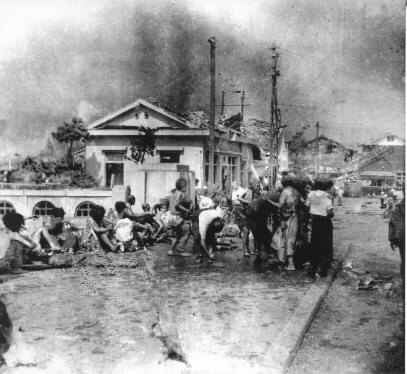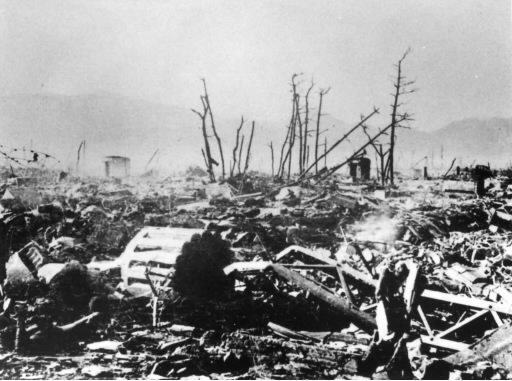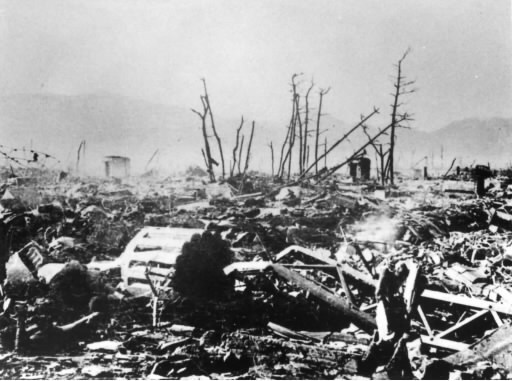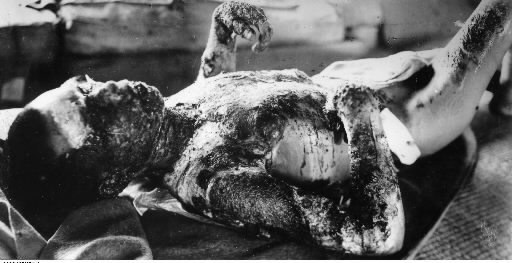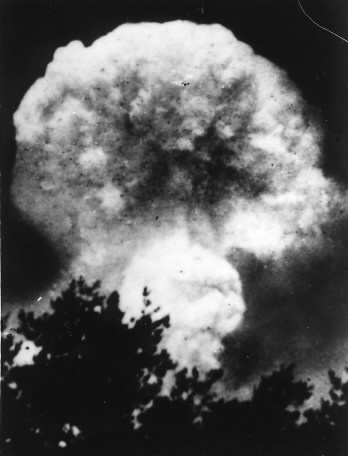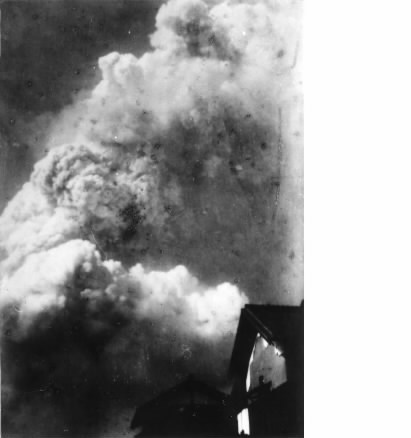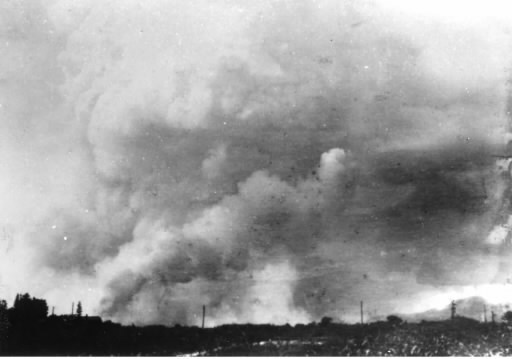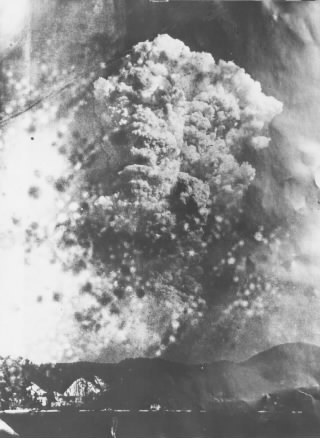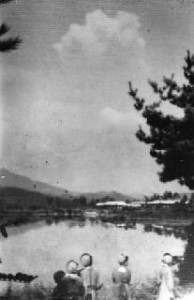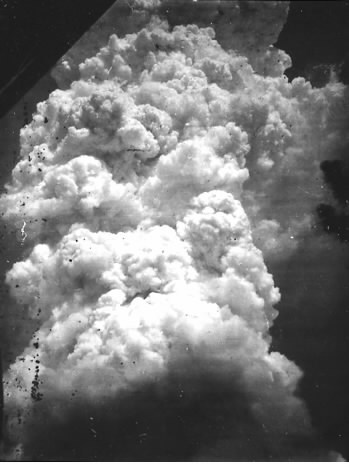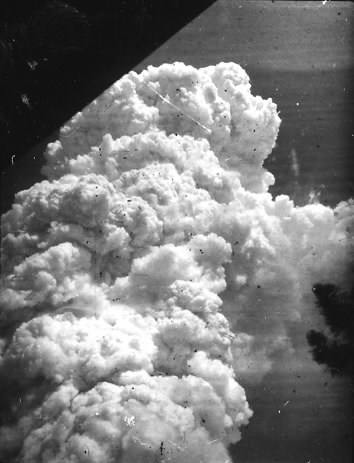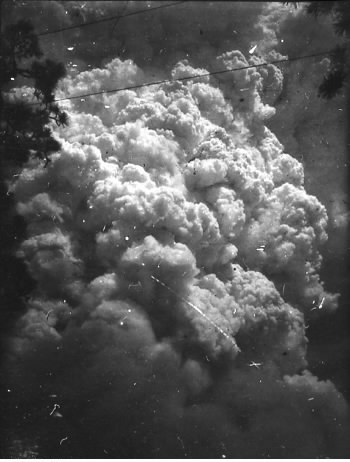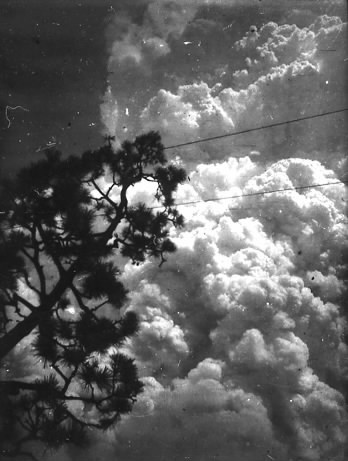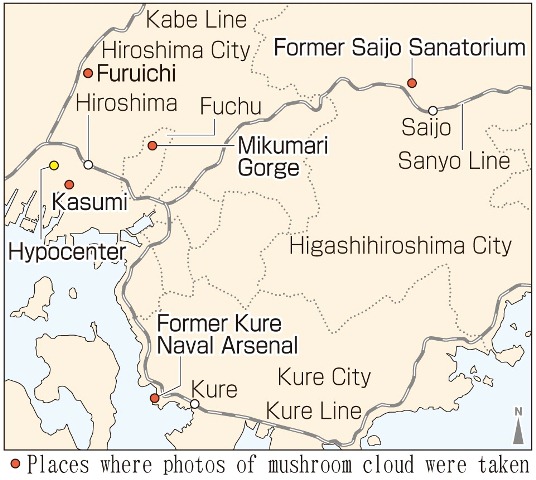- A-bomb Images
- Record of Hiroshima: Images of the Atomic Bombing
Record of Hiroshima: Images of the Atomic Bombing
by Masami Nishimoto, Senior Staff Writer
“Witnesses” to devastation
The horrific devastation that Hiroshima experienced as a result of the atomic bomb is not merely a thing of the past. Today we are surrounded by as many as 30,000 nuclear weapons that are far more powerful than the one used in the world’s first atomic attack on August 6, 1945. No matter our nation or ethnic group, we all live in the nuclear age and yet the reality of the Hiroshima bombing is rarely considered: What were the actual consequences, to the city and its residents, of that single atomic bomb?
Photographs of the atomic bombing can evoke these memories and serve as warnings. This series of three articles, beginning with photos collected by the Association of Photographers of the Atomic Bomb Destruction of Hiroshima, seeks to provide a wider perspective of the unprecedented devastation.
Toshio Fukada, a resident of Nishi Ward, was 16 at the time of the atomic bombing. He attended Sotoku Junior High School for four years, then continued working at the Army Weapons Supply Depot as a mobilized student after graduation. The depot was located in the Kasumi area of present-day Minami Ward, now the site of the Kasumi campus of Hiroshima University, where the faculties of medicine and dentistry are found.
“The moment I went into the building after our morning assembly, there was a flash and I was blown off my feet by the blast,” Mr. Fukuda said. Following the light that filtered in through the buckled iron doors, he made his way out of the building and saw a cloud rising in the sky to the north. Without a second thought, he went back inside the building to retrieve his camera, a Konica “Baby Pearl.” He loved this camera and had secretly carried it in his pocket.
During the war, people were forbidden from taking photos freely. Moreover, he was working at the weapons supply depot. Though he knew he might be shot if he were caught in the act, he took four pictures of the atomic cloud. The negatives of these photos, taken from a distance of 2.7 kilometers—the closest distance for photos of the mushroom cloud—still exist. When printed, an ominous black-and-white cloud is seen, which Mr. Fukuda described as orange in color.
Seiso Yamada, a resident of the town of Fuchu, Hiroshima Prefecture, related the moment he pointed his camera, also a Baby Pearl, at the cloud on that summer day. He was 17.
“The cloud looked sort of black or vermillion, and it billowed up in the sky. I had never seen a cloud like that. When I aimed my camera again at the cloud, it didn’t fit into the viewfinder.” He was on his way to Mikumari Gorge with some friends, having a day off from their jobs at a factory. His photos were taken about 7 kilometers from the hypocenter.
Masami Oki was 31 and working at the Kure Naval Arsenal. He commuted from his home in the town of Kaita, Hiroshima Prefecture, where he still lives. While on duty indoors, he felt such a thundering rumble that his hand, holding a pencil, was jolted up. When he found a huge cloud swirling up high in the western sky about 20 kilometers away, he took out a German-made Leica camera, which was in the office.
On the morning of August 6, 1945, the atomic bomb was detonated 580 meters above Shima Hospital, which was located at 29-2 Saiku-machi (now, part of Ote-machi, Naka Ward). According to records kept by the U.S. military, the explosion came at 8:15 and 30 seconds, which was 43 seconds after the bomb was dropped at an altitude of about 9,300 meters. The blast, heat rays, and radiation unleashed by the explosion of uranium-235 wrought widespread destruction over the unobstructed Hiroshima delta.
According to a study by the late Minoru Yuzaki, a professor at Hiroshima University, 327,457 civilians lived under the atomic cloud. It is estimated that some 43,000 people connected to the Japanese military were there, too. In 1976, the Hiroshima municipal government estimated that the number of deaths reached roughly 140,000 (plus or minus 10,000) by the end of 1945. Because the national government failed to pursue a thorough investigation, a more accurate death toll cannot be made.
There are missing pieces to the true picture of the atomic bombing. These images of the bombing are “witnesses” to the event and will stand in for the victims to convey what happened to future generations.
The Association of Photographers of the Atomic Bomb Destruction of Hiroshima was formed in 1978, and began gathering and preserving photographs of the bombing. The photos taken by 18 people and collected by the association have been held at the headquarters of the Chugoku Shimbun. In all, there are 267 photos: 260 pictures printed from negatives or copies of original prints, and seven anonymous photos from the Imperial Japanese Army Shipping Command. Four of the 18 people who took these photos are still alive.
At his home in the town of Kawamoto, in Shimane Prefecture, Masami Onuka, 83, gazed at the eight photos he took and traced his memories. He was a member of the shipping command’s photography team.
“I took pictures of dying children and women on Ninoshima Island, where the wounded were taken. I was ordered to,” said Mr. Onuka.
While searching for his missing mother Makino, then 62, who lived in Hirano-machi (Naka Ward), Mr. Onuka also took photos at relief stations in the Danbara and Oko districts (now part of Minami Ward). But he no longer has these photos.
As I pursued this assignment, I discovered, however, that photos of relief stations still exist in Hiroshima. And the unknown paths these photos have traveled over the years are now understood.
(Originally published on August 2, 2005)
“Witnesses” to devastation
The horrific devastation that Hiroshima experienced as a result of the atomic bomb is not merely a thing of the past. Today we are surrounded by as many as 30,000 nuclear weapons that are far more powerful than the one used in the world’s first atomic attack on August 6, 1945. No matter our nation or ethnic group, we all live in the nuclear age and yet the reality of the Hiroshima bombing is rarely considered: What were the actual consequences, to the city and its residents, of that single atomic bomb?
Photographs of the atomic bombing can evoke these memories and serve as warnings. This series of three articles, beginning with photos collected by the Association of Photographers of the Atomic Bomb Destruction of Hiroshima, seeks to provide a wider perspective of the unprecedented devastation.
Toshio Fukada, a resident of Nishi Ward, was 16 at the time of the atomic bombing. He attended Sotoku Junior High School for four years, then continued working at the Army Weapons Supply Depot as a mobilized student after graduation. The depot was located in the Kasumi area of present-day Minami Ward, now the site of the Kasumi campus of Hiroshima University, where the faculties of medicine and dentistry are found.
“The moment I went into the building after our morning assembly, there was a flash and I was blown off my feet by the blast,” Mr. Fukuda said. Following the light that filtered in through the buckled iron doors, he made his way out of the building and saw a cloud rising in the sky to the north. Without a second thought, he went back inside the building to retrieve his camera, a Konica “Baby Pearl.” He loved this camera and had secretly carried it in his pocket.
During the war, people were forbidden from taking photos freely. Moreover, he was working at the weapons supply depot. Though he knew he might be shot if he were caught in the act, he took four pictures of the atomic cloud. The negatives of these photos, taken from a distance of 2.7 kilometers—the closest distance for photos of the mushroom cloud—still exist. When printed, an ominous black-and-white cloud is seen, which Mr. Fukuda described as orange in color.
Seiso Yamada, a resident of the town of Fuchu, Hiroshima Prefecture, related the moment he pointed his camera, also a Baby Pearl, at the cloud on that summer day. He was 17.
“The cloud looked sort of black or vermillion, and it billowed up in the sky. I had never seen a cloud like that. When I aimed my camera again at the cloud, it didn’t fit into the viewfinder.” He was on his way to Mikumari Gorge with some friends, having a day off from their jobs at a factory. His photos were taken about 7 kilometers from the hypocenter.
Masami Oki was 31 and working at the Kure Naval Arsenal. He commuted from his home in the town of Kaita, Hiroshima Prefecture, where he still lives. While on duty indoors, he felt such a thundering rumble that his hand, holding a pencil, was jolted up. When he found a huge cloud swirling up high in the western sky about 20 kilometers away, he took out a German-made Leica camera, which was in the office.
On the morning of August 6, 1945, the atomic bomb was detonated 580 meters above Shima Hospital, which was located at 29-2 Saiku-machi (now, part of Ote-machi, Naka Ward). According to records kept by the U.S. military, the explosion came at 8:15 and 30 seconds, which was 43 seconds after the bomb was dropped at an altitude of about 9,300 meters. The blast, heat rays, and radiation unleashed by the explosion of uranium-235 wrought widespread destruction over the unobstructed Hiroshima delta.
According to a study by the late Minoru Yuzaki, a professor at Hiroshima University, 327,457 civilians lived under the atomic cloud. It is estimated that some 43,000 people connected to the Japanese military were there, too. In 1976, the Hiroshima municipal government estimated that the number of deaths reached roughly 140,000 (plus or minus 10,000) by the end of 1945. Because the national government failed to pursue a thorough investigation, a more accurate death toll cannot be made.
There are missing pieces to the true picture of the atomic bombing. These images of the bombing are “witnesses” to the event and will stand in for the victims to convey what happened to future generations.
The Association of Photographers of the Atomic Bomb Destruction of Hiroshima was formed in 1978, and began gathering and preserving photographs of the bombing. The photos taken by 18 people and collected by the association have been held at the headquarters of the Chugoku Shimbun. In all, there are 267 photos: 260 pictures printed from negatives or copies of original prints, and seven anonymous photos from the Imperial Japanese Army Shipping Command. Four of the 18 people who took these photos are still alive.
At his home in the town of Kawamoto, in Shimane Prefecture, Masami Onuka, 83, gazed at the eight photos he took and traced his memories. He was a member of the shipping command’s photography team.
“I took pictures of dying children and women on Ninoshima Island, where the wounded were taken. I was ordered to,” said Mr. Onuka.
While searching for his missing mother Makino, then 62, who lived in Hirano-machi (Naka Ward), Mr. Onuka also took photos at relief stations in the Danbara and Oko districts (now part of Minami Ward). But he no longer has these photos.
As I pursued this assignment, I discovered, however, that photos of relief stations still exist in Hiroshima. And the unknown paths these photos have traveled over the years are now understood.
(Originally published on August 2, 2005)

